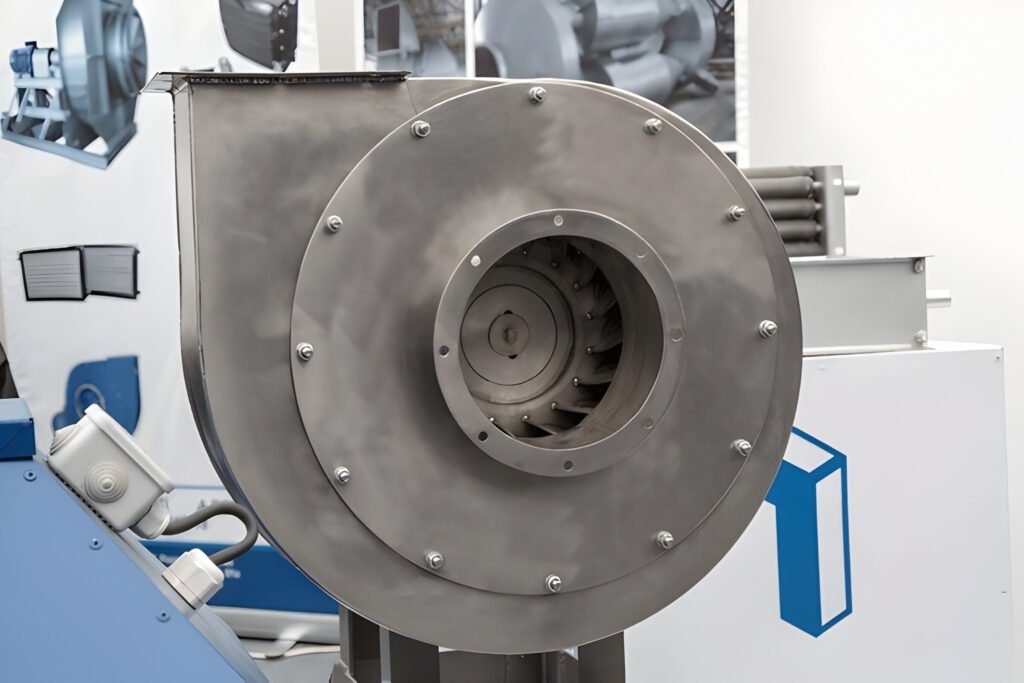What Is the Difference Forward Curved and Backward Curved Centrifugal Fans
Explore the various types of centrifugal fans, their applications, and key differences in design and performance.


Cross flow fans and centrifugal fans are two distinct types of air-moving devices commonly used in industrial, commercial, and residential applications. While both serve the purpose of circulating air, they differ significantly in their design, operating principles, and performance characteristics.
This blog post will delve into the key differences between cross flow fans and centrifugal fans, examining their unique features, energy consumption, noise levels, and typical applications.


A cross flow fan, also known as a tangential or transverse fan, is a type of fan that moves air in a direction perpendicular to the fan’s intake. This unique airflow pattern distinguishes cross flow fans from other types of fans, such as axial fans and centrifugal fans. Cross flow fans feature a cylindrical impeller with forward-curved blades arranged in a circular shape, which allows for a wide and uniform distribution of airflow across the entire width of the fan. This design makes cross flow fans ideal for applications requiring a broad, constant stream of low-pressure air, such as air curtains, cooling electronic components, and ventilation in confined spaces.
Cross flow fans operate by drawing air in through the side of the fan parallel to the shaft, then accelerating and discharging it perpendicular to the intake direction. As the impeller rotates, the blades generate a stable vortex that continuously draws in and expels air. This vortex, also called a vortex tongue, is created by the unique shape and arrangement of the blades, which allows the air to flow smoothly and efficiently through the fan.
A centrifugal fan, also known as a radial fan or blower, is a type of fan that utilizes centrifugal force to generate airflow. Unlike cross flow fans, which move air in a straight line, centrifugal fans use a rotating impeller to draw air into the center of the fan and then expel it radially outward, perpendicular to the shaft. This design allows centrifugal fans to generate higher pressures and operate more efficiently in applications requiring greater static pressure.
The working principle of a centrifugal fan relies on the conversion of rotational kinetic energy into increased static pressure. As the impeller rotates, it draws air into the center of the fan through an inlet. The spinning motion of the blades then accelerates the air radially outward, creating a centrifugal force that increases the air velocity and pressure.


Cross flow fans and centrifugal fans are two distinct types of fans with significant differences in their design features, performance characteristics, energy consumption, and noise levels.
The primary design difference between cross flow fans and centrifugal fans lies in their blade configuration and airflow direction. Cross flow fans, also known as tangential fans, feature an elongated impeller with numerous blades arranged parallel to the fan’s axis. This unique design allows air to flow through the fan in a straight line, perpendicular to the axis of rotation.
Centrifugal fans have a circular impeller with blades that curve either forward or backward. The impeller is mounted on a central shaft, and as it rotates, air is drawn in axially and discharged radially, perpendicular to the intake direction.
Cross flow fans generate a wide, uniform airflow across their length, making them ideal for applications requiring a broad, gentle flow of air. They typically operate at lower pressures compared to centrifugal fans and are well-suited for low-pressure, high-volume airflow applications.
Centrifugal fans are capable of producing higher pressures and are designed to handle more demanding airflow requirements. They can generate high-pressure airflows and are commonly used in applications where the air must be moved against resistance or through a ducted system.
Cross flow fans generally have lower power consumption compared to centrifugal fans of similar size and airflow capacity. This is due to their simple design and the fact that they operate at lower pressures. Cross flow fans are often more energy-efficient in applications where high volumes of air need to be moved with minimal resistance.
Centrifugal fans, while capable of delivering higher pressures, may consume more energy to overcome the resistance in the system.
Cross flow fans typically generate lower noise levels compared to centrifugal fans. The elongated design of cross flow fans allows for a more gradual and smooth airflow, resulting in reduced turbulence and noise. The airflow through a cross flow fan is laminar, which contributes to its quiet operation.
Centrifugal fans can produce higher noise levels due to the high-velocity airflow and turbulence generated by the impeller.
Advantages:
Disadvantages:
Advantages:
Disadvantages: